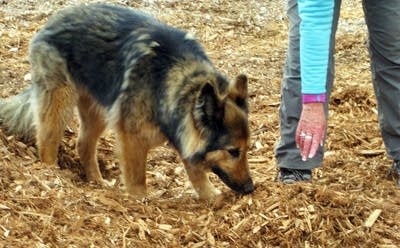MN to test dogs against emerald ash borer
Go Deeper.
Create an account or log in to save stories.
Like this?
Thanks for liking this story! We have added it to a list of your favorite stories.

Specially-trained dogs could soon help enforce quarantines against Emerald ash borer in Minnesota.
Ramsey, Hennepin, Houston, and Winona counties have quarantines that prohibit the movement of ash materials, and any other hardwood firewood. State officials say it is difficult to distinguish one type of firewood from another.
Four dogs will join human workers this summer as they inspect yard waste sites and trucks hauling compost, said Liz Erickson, spokeswoman for the Minnesota Department of Agriculture.
"Our regulatory crew has a schedule of what sites to visit, so on their regular site visits they'll take the dogs to have a more efficient and effective site visit," Erickson said.
Turn Up Your Support
MPR News helps you turn down the noise and build shared understanding. Turn up your support for this public resource and keep trusted journalism accessible to all.
The dogs — two Labrador Retrievers (one yellow, one black), a German Shepherd, and a Belgian Malanois — are being trained by the non-profit group Working Dogs for Conservation to detect ash wood and Emerald ash borer larvae. The invasive pests threaten ash trees across the state and across the country.
Officials demonstrated the dogs' capabilities at the Ramsey County compost site in Arden Hills on Tuesday, and said the dogs may be ready to start sniffing mulch piles, yard waste sites, and commercial vehicles as early as July.
"What we might think is not infested by our eyes, the dogs are able to scent out if there is any ash material or infested material in those piles," Erickson said.
The beetles were first detected in Minnesota in St. Paul in 2009.
The project is paid for with a federal grant. Dogs are also being used to detect another invasive pest, the Asian longhorn beetle, in Eastern states.
Associated Press contributed to this story.






